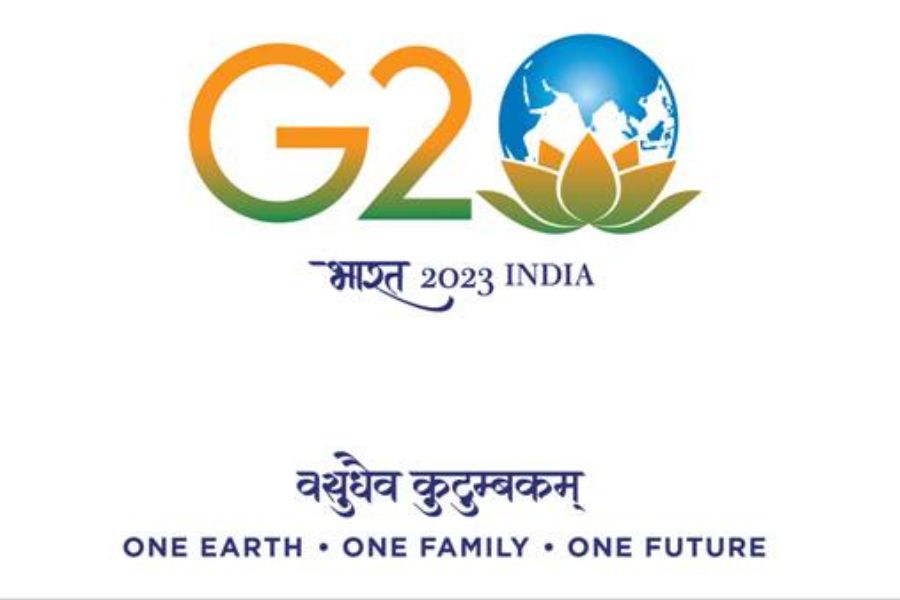Budget 2022-23: A ‘climate budget’
Climate change is a serious challenge faced by various countries across the globe. As the 3rd largest carbon emitter, India is proactively taking various initiatives highlighted by the government in the Union Budget 2022-23, a ‘climate budget’ aimed at promoting clean energy and decarbonising the economy, in combating such crisis.
● The government’s net-zero commitment enunciated under Panchamrit at COP26 Summit in Glasgow is to achieve energy capacity of 500 GW with a 50% share in non-fossil fuel-based energy, reduced carbon intensity by 45%, projected carbon emissions to be brought down by 1 billion tonnes by 2030 backed by net-zero emissions by 2070.
● The government aims to mobilize resources by allocating ₹19,500 crores using the Production Linked Incentive (PLI) scheme for boosting the domestic manufacturing of PV modules, financial assistance, and devising policies for battery swapping, setting up charging stations, and issuance of Green Bonds.
● Policy formulation for biomass pellets, coal gasification, agroforestry, setting up of improved infrastructure for Saksham Anganwadis, etc., is being undertaken for achieving the zero fossil-fuel policy.
● There is a need to focus on other energy sectors such as offshore wind, green hydrogen, and hydro energy. Favourable tax incentives, policy formulation, capacity additions, and the creation of a suitable infrastructure system can drive India to self-reliance in the renewable energy sector.

Image credit: Prakash Shetty
Climate change has been a matter of global concern, that has spread its tentacles in developed and developing countries alike. As per the International Energy Agency, India is the 3rd largest carbon emitter with nearly 2.35 gigatonnes of carbon emissions in the year 2021. With a stated target of net zero emissions in 2070, India is taking various initiatives to combat the climate challenges.
The government’s low carbon development strategy enunciated under Panchamrit at the COP26 Summit in Glasgow aims to achieve a set target of 500 gigawatts (GW) and 50% share of non-fossil fuel-based energy; carbon intensity to be reduced by 45% and projected carbon emissions to be brought down by 1 billion tonnes by 2030. The current capacity stands roughly around 140 GW, which requires to be expanded roughly fourfold and renewable energy generation by roughly three times by 2030 to achieve the set target. Recognizing this, the latest Economic Survey noted:
India’s commitments made under the United Nations Framework Convention on Climate Change (UNFCCC) and its Paris Agreement, reflect the principles of equity, common but differentiated responsibilities and respective capabilities in the light of national circumstances. India’s climate vision is also integrally linked to India’s vision of development that foregrounds the goals of poverty eradication and guaranteeing basic well-being as an immediate necessity to meet the challenge of global warming.
To augment the climate-resilient development and provide a roadmap to achieve these targets, Finance Minister Nirmala Sitharaman presented the Union Budget 2022-23 as a ‘Booster Budget’ or a ‘Climate Budget’. She mentioned that the risks of climate change are the strongest negative externalities. The Budget underlined the importance of energy transition, sustainable development, and climate action.
Climate financing and mobilizing resources
To catalyze the domestic manufacturing of high-efficiency modules, allocation of ₹19,500 crores using the Production Linked Incentive (PLI) scheme was made in the Budget 2022-23, for attaining an ambitious target of 280 GW of installed solar capacity by 2030. This was in addition to ₹4,500 crores for facilitating 10 GW of solar modules, entailing a direct investment of ₹12,000 crores. The additional PLI allocation of ₹19,500 crores is expected to bring an investment worth ₹30,000-₹35,000 crores in the PV cells and modules.
This is crucial as India has has been highly dependent on imports (majority of it from China) to meet the requirements of solar modules and cells, despite being the 5th largest country in the world in terms of installed solar power. The PLI scheme would facilitate the manufacturing capacity of 40 GW solar modules, thereby reducing dependence on Chinese imports.
Another area of focus is transportation, resulting in a 13.5% share in carbon emissions, with road transport accounting for 90%. Hence, clean energy powered by electric vehicles remains critical for meeting the net-zero-carbon emission policy. The Budget 2022-23 provided an impetus to the use of public transport complemented by clean technology, special mobility zones for EV vehicles, and a battery swapping policy.
The government also intends to launch a policy for battery swapping and setting up charging stations at scale, and formulating interoperability standards. Around Rs 20,000 crore investment in infrastructure projects along with the expansion of National Highways network by 25,000 km in 2022-23, coupled with strengthening the rural economy to improve consumer sentiment can spur demand for EVs, leading to improved vehicle sales.
The launch of Sovereign Green Bonds as part of the overall market borrowings is another step towards energy transition and decarbonizing the economy. These refer to debt instruments that differ from conventional fixed-income securities only in that the issuer pledges to use the proceeds to finance projects that are meant to have positive environmental or climate effects. The Green Bonds will be issued for mobilizing resources for green infrastructure. The proceeds will be deployed in carbon-free public-sector projects, reducing India’s carbon footprint. India will join the ranks of 19 nations that have issued similar bonds.
Further, a budgetary allocation to Saksham Anganwadis is a step towards Net Zero by 2070. Saksham Anganwadis provide improved infrastructure, audio-visual aids powered by clean energy to offer a conducive environment for early childhood development. Upgradation of 2 lakh Anganwadis has been proposed.
Energy transition and policy formulation
Stubble burning in agricultural fields is a common practice in states like Punjab, Haryana, and Uttar Pradesh which leads to deterioration of air quality in and around these states, causing pollution levels to rise every year. In a bid to control the rising pollution levels, the so called climate budget 2022-23 mandated that 5-7% biomass pellets will be co-fired in thermal power plants. This will encourage farmers to convert the crop stubble into pellets mixed with coal to generate electricity, resulting in 38 million metric tonnes of carbon savings annually. This will also provide extra income to the farmers and job opportunities to the locals and help avoid stubble burning.
Given the vast coal reserves of about 350 billion tonnes, coal can be used through gasification technology resulting in minimal carbon emissions and helping overcome the shortage of oil, gas, methanol, ammonia, urea, and other products making India Aatmanirbhar. Four pilot projects for coal gasification and conversion of coal into chemicals will be set up to evolve technical and financial viability. This can further boost private sector confidence in the segment.
Policies and legislative changes to promote agroforestry and extend financial support to farmers belonging to Scheduled Castes and Scheduled Tribes who want to take up agroforestry, would be provided. Action plans for ten sectors such as electronics waste, end-of-life vehicles, used oil waste, toxic and hazardous industrial waste, etc., would also support the transition to a carbon-neutral economy.
In addition, a single-window portal Parivesh was launched in 2018 for quick green clearances and land availability. The scope of this portal is proposed to be expanded. This will enable application for approvals through a single form and tracking the process through Centralized Processing Center green (CPC green).
Off to a good start, but a long way to go
While much has been addressed through this climate budget, a lot needs to be implemented. Apart from solar energy and electric vehicles, other renewable energy sources such as green hydrogen, offshore wind, and hydro energy were under-emphasized. Energy Economist, Lead India, IEEFA, Vibhuti Garg opined that:
At a macro level, increase in Capex will boost economic growth, however, not much additional budgetary support or tax incentives have been provided to clean energy both grid and off-grid including solar rooftop, storage technologies, and green hydrogen.
There is a need for favourable tax incentives for the deployment of solar rooftop, storage, offshore wind, and green hydrogen for commercial viability. As per CEEW assessment, there has been a surge in government support for fossil fuels in 2017 by 65% while the support for renewable energy has declined by 35%. The subsidies for fossil fuels such as oil, gas, and coal of ₹83,134 crores in FY2019, are seven times the subsidies for renewable energy. There seems to be a mismatch in government support that needs rectification.
The schemes launched need be monitored at regular intervals for regulating the performance. Appropriate capacity addition, creation of green infrastructure systems, and more favourable policy formulations can push India towards self-reliance in renewable energy, sustainable development and emerge as a global leader.













Leave a comment